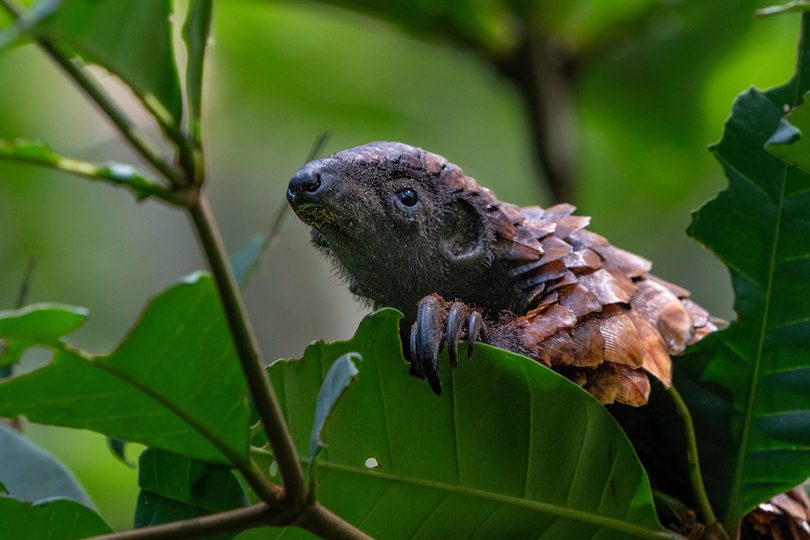
Researchers from the Oxford Martin Programme on Wildlife Trade have identified legal uncertainties in wildlife trade and argue that addressing them could help secure better outcomes for both wildlife and people.
Published in Conservation Letters, the new research, titled Resolving Uncertainties in the Legality of Wildlife Trade to Support Better Outcomes for Wildlife and People, highlights how legal uncertainties affect wildlife trade systems and offers practical steps to address them.
We need to tailor our interventions to address these uncertainties, especially considering the complexity and fast-changing nature of illegal wildlife trade
Dr Trisha Gupta, conservation scientist at the Zoological Society of London, who led the study, said: “Right now, legal ambiguities are often ignored, yet they shape how the trade operates. Recognising and resolving these uncertainties is critical if we want to make wildlife trade more sustainable and equitable.’’
Wildlife trade is a major global industry, valued at an estimated US$400 billion annually. It ranges from timber and medicinal plants, to seafood, and even trade of live pets, supporting millions of livelihoods worldwide. But without strong regulation, it poses serious risks to biodiversity and can fuel illegal activity.
An international team of 15 researchers, with interdisciplinary expertise spanning ecology, law, policy, and economics, collaborated through the Interdisciplinary Conservation Network to examine how legal uncertainties affect wildlife trade and its governance. The project, led by Oxford researchers, included a workshop hosted by the Oxford Martin School.
Professor Dame EJ Milner-Gulland, who leads the Interdisciplinary Conservation Network initiative said: "ICN aims to bring early career researchers from around the world together to design and implement interdisciplinary research that breaks new ground and takes advantage of their diverse backgrounds and perspectives. I'm delighted that Trisha and Reshu's leadership of the ICN team has led to such an insightful and useful piece of research."
The team identified legal uncertainties and categorised them into three main dimensions;
- Institutional uncertainties arise due to lack of clarity related to formal institutions (e.g. laws), for instance, due to unspecified or conflicting laws and policies, including across multiple jurisdictions.
- Operational uncertainties arise due to the overlap of legal and illegal wildlife products in a supply chain.
- Perceptual uncertainties occur when actors in wildlife trade systems have a different understanding and perspective on laws and policies that apply to wildlife use and trade.
This novel categorisation helps identify how and where uncertainties arise and can inform the design of more effective conservation interventions.
The study also draws lessons from other industries facing similar governance challenges. For example, the Kimberley Process Certification Scheme (KPCS) for diamonds offers potential insights for improving transparency and traceability in wildlife trade.
Key recommendations from the study include:
- Developing clearer and more consistent legal frameworks at both national and international levels.
- Improving traceability systems and enforcement capacity to better distinguish legal from illegal products.
- Improving the awareness of actors through measures like mandatory labelling of products and clarification of complex laws, to reduce misunderstandings and foster compliance.
- Learning from successful models in other sectors to enhance wildlife trade governance.
Sustainable and legal harvesting and trade of wild species is a target for international frameworks such as The Convention on Biological Diversity's Global Biodiversity Framework (CBD‐GBF). This research contributes practical guidance for tackling legal uncertainties in wildlife trade at different governance levels.
Ultimately, the paper argues that resolving legal uncertainties is not only vital for conservation but also for supporting the millions of people who rely on wildlife trade for their livelihoods. Addressing these grey areas can promote more ethical, sustainable, and equitable outcomes for people and wildlife.
“As the global conservation community is gearing up to halt and reverse biodiversity loss, it is crucial that we scrutinize these grey areas that shape wildlife trade’’, said Reshu Bashyal, co-lead author and Research and Program Lead at Greenhood Nepal. ‘We need to tailor our interventions to address these uncertainties, especially considering the complexity and fast-changing nature of illegal wildlife trade’’.
Dr Dan Challender, Senior Research Fellow with the Wildlife Trade programme and the University’s Department of Biology, and co-author of the study, added: “Ensuring that laws and policies that apply to wildlife harvest and trade are well designed and are understood by key actors including harvesters, traders and law enforcement agents is critical to ensuring that wildlife trade is both legal and sustainable.”